Greetings all,
After a little over ten years on the last ones, we finally broke down and bought new batteries. Wow. Big improvement. Kind of the feeling you get when you change your flashlight batteries, and realizing you've waited too long.
One of the many milestones has been to increase our storage capacity. Here are the new batteries in the truck. It worked out well as they were palleted, and we were able to have them drop-shipped where I work, eliminating handling at the transfer.
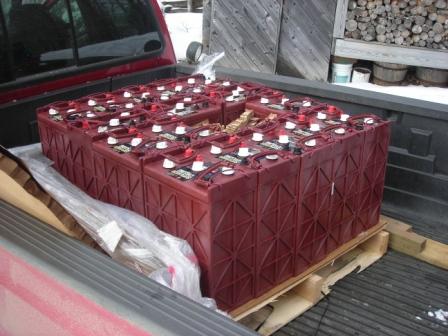
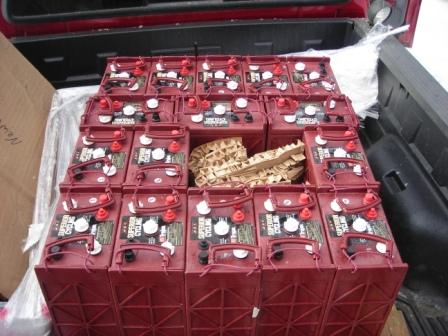
They are the same batteries - Trojan L16HC's - but we basically went from one series string of eight, to two parallel strings, or a total of sixteen, wired like this:

We built a new base, and extended the prior venting arrangement. It is probably a bit undersized. I'm thinking we should increase the outlet diameter in the summer, but it is a bear of a wall to bore through. It is a bit of a broad-brush, but the factory vent caps have only 2- 7/64" diameter holes in each cell, three cells per battery, or in total about .90 sq inches. The existing outlet is 1" (.79 sq inches). We're in sugaring season again, so the tubing is readily available.
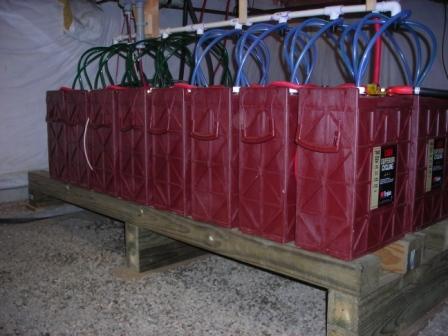
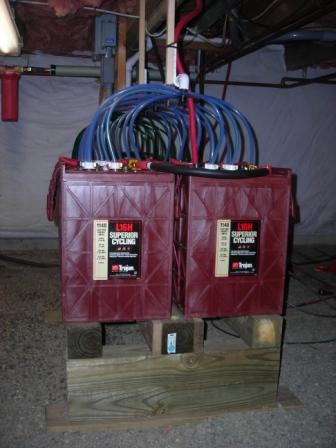
I found a conical wire brush in the shop that worked pretty slick to shine up the stud terminals in short order, and we made up new, soldered cables.
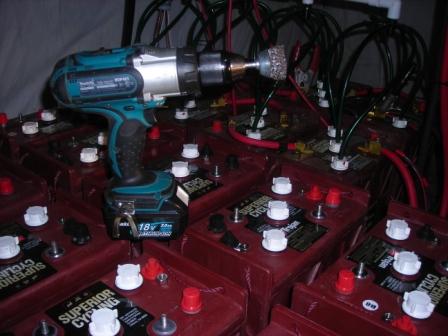
We converted over to 48V last summer, but we still have a lot of 12V lights and smaller low voltage DC loads (phones, answering machine), and found we were frequently overloading a smaller ~250 watt equalizer in higher winds where the charging "input" is 12V. I guess there are practical limits to even current limited devices.
At the same time we found we really did not have as many 24V needs as anticipated. Our trusty old fridge, for example, uses a Danfoss compressor - as is used on Sunfrost refrigerators - but apparently was manufactured prior to the dual-voltage (12/24) later models. Anyhow given our relative pace, we opted to increase the capacity of the equalizer - a Solar Converter's "autotransformer" - and forego the 24V battery tap. This one is rated at 30A @12V (7.5A@48V) and seems to be a much better match to the available load. We've been very happy with them (no affiliation).
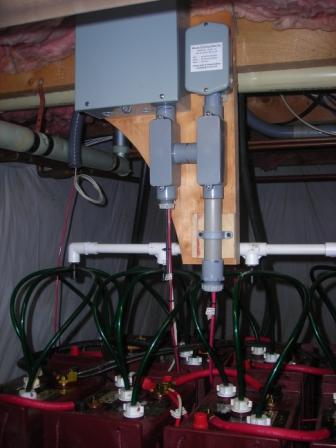
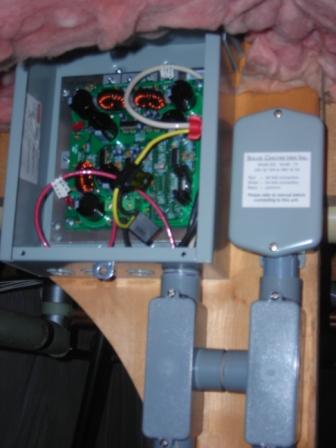
We had the second of two nasty ice storms this weekend, followed by three and a half days of high winds. The Rutland was iced-still
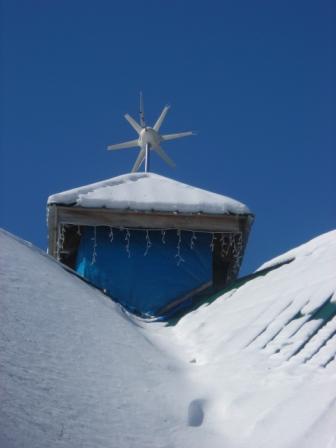
But, the Sencenbaugh (it's fully furled in the background) managed to shed the ice.
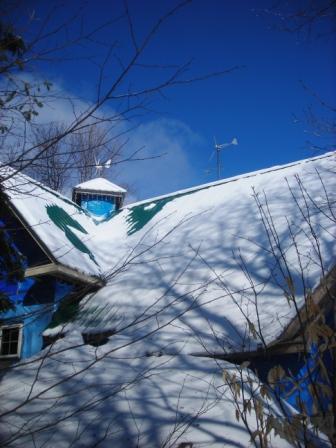
Here the winds are steady, and the converter is "sharing" about 20 amps with the rest of the bank. The smaller converter is now just a step-down (48V to 24V) equalizer dedicated to the submersible well pump.
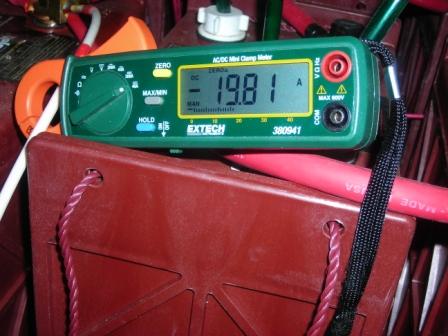
The next step is going to be to rewire the PV panels to 48V. We hope to add a few more panels when we have re-shingle the roof. I'm anxious to further into our axial-mill, but these things all take time. Slow and steady....
Kind regards,
~kitestrings